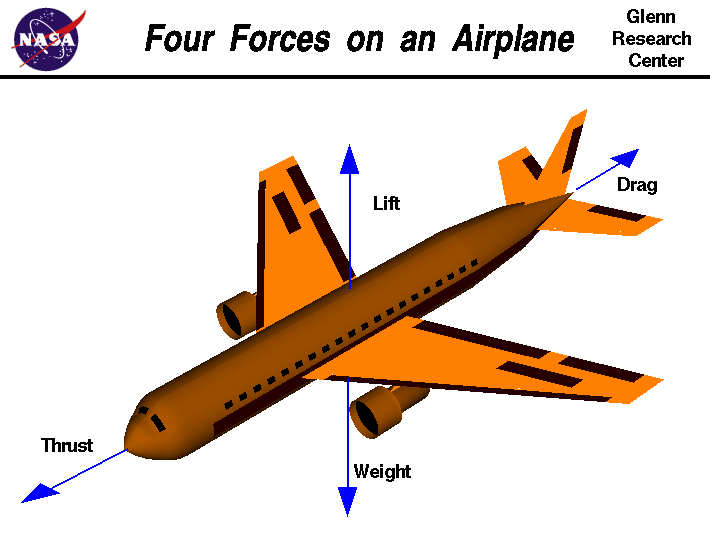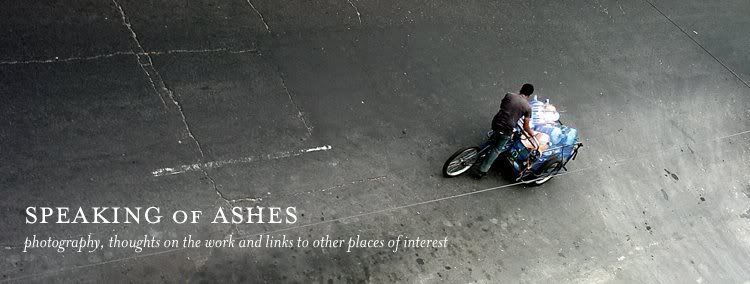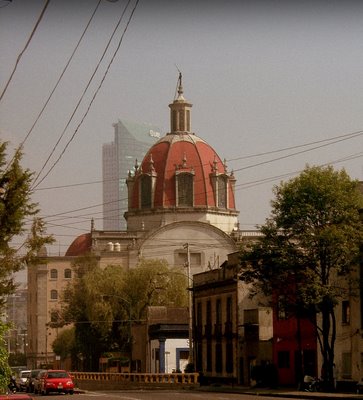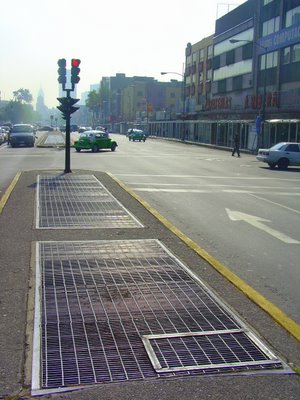Monday, October 30, 2006
liberalism gone completely out of control
from Mother Jones:
In the early 1980s the government of New Zealand fell into the hands of true believers, globalist believers, and they embraced the theory of inevitability perhaps more completely than anybody else. And it solved in the very short term some of their debt problems, but in the medium- and long-term it left them in real economic trouble. One of the things they did was sell of everything they could, mainly internationally, and they got a one-time import of capital, followed by a yearly drain, because they had to send all the royalties out every year. So they had youth leaving in droves, a drain of money, high unemployment and so on. And then in 1999 they made the choice to turn their backs on globalism, which didn't mean to become protectionist, but did mean to put social policy in the center, and economics at the outer rim, and to be much more balanced in their approach. And now they've got their unemployment way down; they've renationalized some things, including their airlines, they've started up a very interesting national small-loans bank, and they've got pretty good growth. Also, the government that came to power 1999 and has enacted this program has just been reelected to a third term.
Posted by Ashes77 at 10:05 AM 0 comments
Thursday, October 26, 2006
Wednesday, October 25, 2006
Tuesday, October 24, 2006
Sunday, October 22, 2006
There is a relationship between memory and freedom
 I used to tell people that I wouldn't read art theory, that literary theory and literary thinkers were always light-years ahead of people still fumbling around with this crap they call "concepts," and "conceptualism." I am not sure I feel much different about it now.
I used to tell people that I wouldn't read art theory, that literary theory and literary thinkers were always light-years ahead of people still fumbling around with this crap they call "concepts," and "conceptualism." I am not sure I feel much different about it now.
I've had OE (a literary blog) on my aggregator list for a long time cause they publish some relatively obscure Polish writers and such. Fun but not always relevant, really, to what I like to think about. There are probably too many writers' blogs to keep on top of, but I like to touch base with a few from time to time.
Jean Mackin's Essay about "What Fiction Asks Us To Remember" is just the sort of actual thinking that I try to encourage artists around me to do. It would probably get you laughed out of Yale's MFA program, but it is a lot more relevent to me than anything that has passed for thinking coming out of those lofty places.
"Perhaps historical fiction keeps our memories malleable by constantly recreating and adding to those memories; perhaps there is a connection between fiction, memory and freedom." Perhaps painting keeps our memories malleable. Perhaps there is a connection between painting and freedom... and memory?
[...] who’s to say that an artificial memory is less meaningful than mundane ones? De La Mettrie argues that memories become encoded in neurons and have physical properties, so why can’t the memories acquired in a reading of fiction matter as much as the memory of today’s first cup of coffee and who poured it for you? Read, and remember. Is it possible to also understand something from what is given us by the memories in fiction?I'd say yes. And it is a lot more interesting a question than I hear being posed by "concepts." Honestly, whatever that even is nowadays, I have so long ago lost interest, but it is nice to ponder that painting today deals in real truth. In possible valid truths that are otherwise un-reachable, painting is reaching for possibilities. Without going too rabid on conceptualism, I think that the thinking being done in those kinds of conversations is simply not doing that. I think at times I get perceived as being some sort of history fanatic. Maybe that is not far from the truth, but I am not sure what else to call the subject matter of what we are and where we came from and who are we today, but history. And history, as a literary art, has an advantage that art-making, art practice, art thinking maybe doesn't anymore. We used to be able to say that history was based in "fact," and that those writing history had a tremendous power. I wonder if we've ceded that power. Certainly in Fine Arts, that power is long gone.
Posted by Ashes77 at 8:20 PM 0 comments
Labels: art thinking, literary
Thursday, October 19, 2006
perfect safety

Nice things from Glenn Greenwald today.
But nobody thinks we're "perfectly safe." Nothing in life is "perfectly safe." Perfect safety is an illusion, something that is wasteful to pursue, and when pursued to the exclusion of all else, creates a tragically worthless, paralyzed way of life. On a political level, pursuit of "perfect safety" as the paramount goal is precisely what produces tyranny, since one will be motivated by that value system to vest as much power as possible in the government, without limits, in exchange for the promise of maximum protection.The perfect safety of a culture wrapped up in its own self-righteousness is what prevents such a culture from breathing and learning. I can not imagine returning to the land of a thousand cop shows on TV, a land that is over-run with serial killers and poisoned everything. This is the same land that artists are sure is the height of western culture, the pinnacle of all civilizations, beseiged by brown-skins. I ask more that artists glimpse a little beyond the blare of TV screens and Chelsea complicity.
"Art" with that capital A remains part of the world of perfect safety. Impenetrable, it is an artifact of a falsified history.
Posted by Ashes77 at 2:46 PM 0 comments
Labels: politics
Thursday, October 05, 2006
art for life's sake
 William H. McNeill's review of a couple of new books on paleolithic art in the NYRB offer some ancient insight on the "why make art" question.
William H. McNeill's review of a couple of new books on paleolithic art in the NYRB offer some ancient insight on the "why make art" question.
Guthrie [...] takes up the importance of play and more especially of art-making for enhancing creativity and shaping a distinctive human ecological niche for "the artful ape." He explains:
The evolutionary tack of more learning gained through a long childhood was a difficult route because it involved acquiring facility and wisdom through many mistakes—and mistakes can be costly. The partial evolutionary fix for this was to create a sort of virtual world, paralleling the adult world, a vital playground of make-believe.
Cave art is the principal surviving part of that "virtual world," attesting how "play, art, and creativity are all linked to the process of our becoming large-mammal-hunting specialists." He sums up his entire argument in the chapter's final sentence: "Paleolithic art is the first clear spoor of advancing creativity in the human line..., not art for art's sake, but art for life's sake."
Posted by Ashes77 at 12:19 PM 0 comments
Labels: art thinking, prehistory






